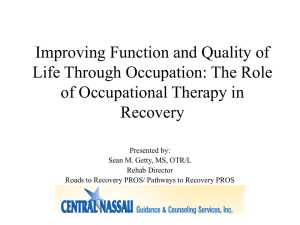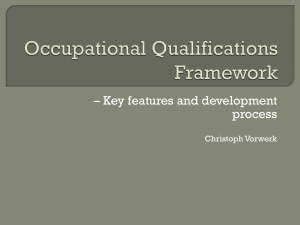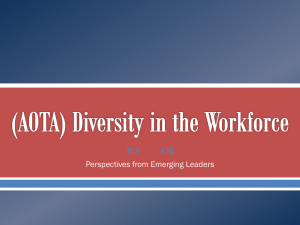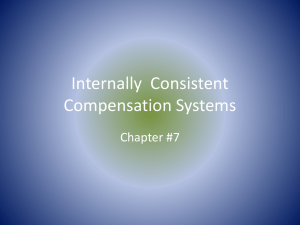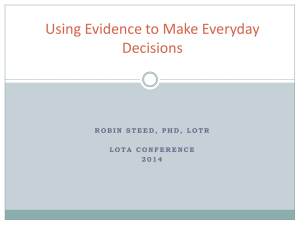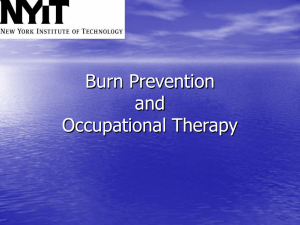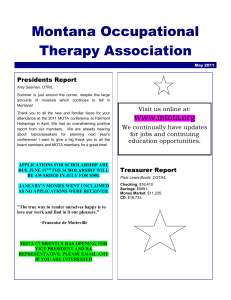File - Coalition of Occupational Therapy Advocates for
advertisement
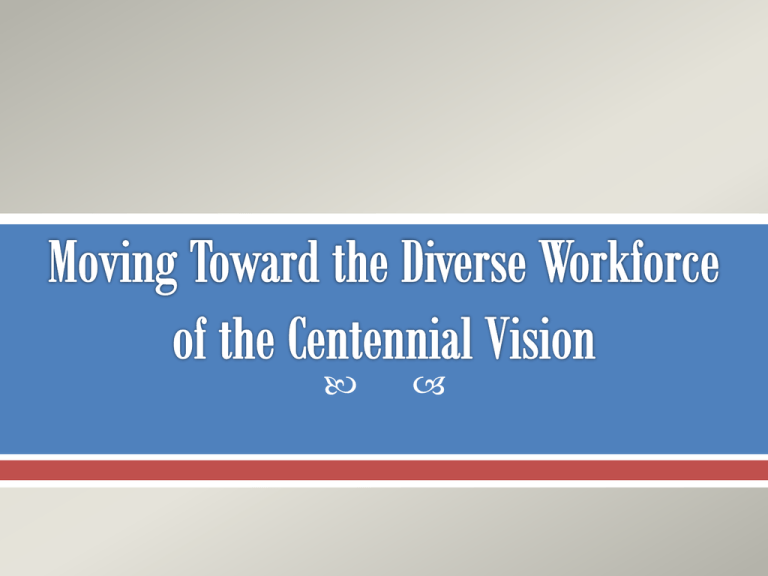
1. What does “diversity” mean to you? How does diversity relate to your workplace? 2. What are some strategies that you have observed, implemented, or could do to promote diversity in the workforce? 3. Discuss the concepts of cultural competence, cultural humility, cultural fluidity, and trans-cultural care. Why are these different? Do they matter? Why or why not? 1. 2. What were some of the perspectives discussed by your group? Were there any insights or epiphanies you would like to share? Are there any other supports or barriers to promoting diversity in your workplace or university that you have observed? Invest in people—it can make all the difference Tell people who you are and what you do. Advocate for what you are doing, and look for teachable moments Be an advocate in/for your community. Look for volunteer opportunities to speak at local schools or career fairs Create volunteer/observation opportunities for youth Do not underestimate the one minute elevator speech. You can change a life in a minute Provide opportunities for structured and unstructured mentorship on multiple organizational levels Provide financial support for Conference and/or Conclave Strategize inclusion of OT in career interest tools/events Be strategic about recruitment and have high expectations Move Beyond Cultural Competence Cristina Reyes Smith, OTD, OTR/L; Medical University of South Carolina (Charleston, SC); (843) 814-7917; smithcris@musc.edu Arameh Anvarizadeh, OTD, OTR/L; California Children’s Services (Los Angeles, CA); (213) 820-3260; anvariza@gmail.com D’Andre Holland, OTD, OTR/L; Every Child Achieves (Los Angeles, CA); (317) 445-8573; deehollandOT1209@gmail.com Catherine Hoyt Drazen, OTD, OTR/L; Washington University in St. Louis (St. Louis, MO); (301) 467-0177; hoytc@wusm.wustl.edu Nadine Kwebetchou, MS, OTR/L; VA Palo Alto (Palo Alto, CA); (443) 562 -3774; nadine.kwebetchou@gmail.com Stacy Wilson, MS, OTR/L; WakeMed Health and Hospital (Raleigh, NC); (336) 847-0093; mrstacywilson@gmail.com American Association of Family Physicians. (n.d.). Cultural Proficiency. Retrieved from http://www.aafp.org/patient-care/public-health/cultural-proficiency.html American Occupational Therapy Association. (2013). AOTA’s societal statement on health disparities. American Journal of Occupational Therapy, November/December 67, 6 (Supplement), 57-58. American Occupational Therapy Association. (2012). Academic Programs Annual Data Report: Academic Year 2011-2012. Retrieved from http://www.aota.org//media/Corporate/Files/EducationCareers/Accredit/47682/2011-2012Annual-Data-Report.pdf ˜American Occupational Therapy Association. (2011). ACOTE Standards. Retrieved from http://www.aota.org//media/Corporate/Files/EducationCareers/Accredit/Draft-Standards/2011Standards-and-Interpretive-Guide-August-2013.pdf American Occupational Therapy Association. (2010). Faculty Workforce Survey. Retrieved from http://www.aota.org//media/Corporate/Files/EducationCareers/Educators/OTEdData/2010%20Fac ulty%20Survey%20Report.pdf American Occupational Therapy Association. (2007). AOTA’s centennial vision and executive summary. American Journal of Occupational Therapy, 61, 613– 614. ˜Census.gov. (n.d.). Methodology and Assumptions for the 2012 National Projections. Retrieved from http://www.census.gov/population/projections/files/methodology/methodstate ment12.pdf Dass, P., & Parker, B. (1999). Strategies for managing human resource diversity: From resistance to learning. Academy of Management Executive, 12, 68–80. Dreachslin, J. L., Hunt, P. L., & Sprainer, E. (2000). Workforce diversity: implications for the effectiveness of health care delivery teams. Social Science & Medicine, 50, 1403-1414. Dreachslin, J. L., Weech-Maldonado, R., & Dansky, K. H. (2004). Racial and ethnic diversity and organizational behavior: a focused research agenda for health services management. Social Science & Medicine, 59, 961-971. ˜Gates, M. G., & Mark, B. A. (2012). Demographic diversity, value congruence, and workplace outcomes in acute care. Research in Nursing and Health, 35(3), 265-276. Halime, C., Abma, T. A., Klinge, I., & Widdershoven, G. A. M. (2012). Process evaluation of a diversity training program: The value of a mixed method strategy. Evaluation and Program Planning, 35, 54-65. ˜Hildebrand, K., Lewis, L.J., Pizur-Barnekow, K., Schefkind, S., Stoffel, A., & Wilson, L.S. (2013). Frequently asked questions: How can occupational therapy strive towards culturally sensitive practices. Retrieved from http://www.aota.org/media/Corporate/Files/Secure/Practice/Multicultural/FAQ CulturalSensitivity.pd1f Iwama, M. (2003). Toward culturally relevant epistemologies in occupational therapy. American Journal of Occupational Therapy, 57, 583–589. Ketelaar, M., Russell, D.J., & Gorter, J.W. (2008). The challenging of moving evidence-based measures into clinical practice: Lessons in knowledge translation. Physical and Occupational Therapy in Pediatrics, 28(2), 191-206. Kinébanian, A. & Stomph, M. (1992). Cross-cultural occupational therapy: a critical reflection. American Journal of Occupational Therapy, 46, 751–757. Kirsh, B., Trentham, B., & Cole, S. (2006). Diversity in occupational therapy: Experiences of consumers who identify themselves as minority group members. Australian Occupational Therapy Journal, 53, 302-313. ˜Lomas, J. (2007). The in-between world of knowledge brokering. British Medical Journal, 334, 129–132. McGee, R., Saran, S. & Krulwich, T. A. (2012). Diversity in the biomedical research workforce: Developing talent. The Mount Sinai Journal of Medicine New York, 79(3), 397-411. ˜Merriam-Webster, Inc. (n.d.). Diversity. Retrieved from http://www.merriamwebster.com/dictionary/diversity Nkansah, N. T., Youmans, S. L., Agness, C. F., & Assemi, M. (2009). Fostering and managing diversity in schools of pharmacy. American Journal of Pharmaceutical Education, 7. Nochajski, S., & Matteliano, M. (2008). A guide to cultural competence in the curriculum: Occupational therapy. Retrieved from Center for International Rehabilitation Research Information and Exhange (CIRRIE) website: http://cirrie.buffalo,edu Nunez-Smith, M., Pilgrim, N., Wynia, M., Desai, M. M., Jones, B. A., Bright, C., Krumholz, H. M., & Bradley, E. H. (2009). Race/ethnicity and workplace discrimination: results of a national survey of physicians. Journal of General Internal Medicine, 11, 1198-1204. ˜Rappolt, S., & Tassone, M. (2002). How rehabilitation therapists gather, evaluate, and implement new knowledge. Journal of Continuing Education in the Health Professions, 22, 170–180. Shippy, M.A. (2009). Cultural Fluidity: How multicultural leaders adapt in the US business environment. Verlag, Germany: VDM Verlag. Suarez-Balcazar, Y., Balcazar, F., Taylor-Ritzler, T., Portillo, N., Rodakowski, J., Garcia-Ramirez, M., & Willis, C. (2011). Development and validation of the cultural competence assessment instrument: A factorial analysis. Journal of Rehabilitation, 77, 4–13. Tervalon, M. & Murray-Garcia, J. (1998). Cultural humility versus cultural competence: A critical distinction in defining physician training outcomes in multicultural education. Journal of Health Care for the Poor and Underserved. 9(2). Trentham , B., Cockburn, L., Cameron, D., & Iwama, M. (2007). Diversity and inclusion within an occupational therapy curriculum. Australian Occupational Therapy Journal, 54, S49-S57. Weech-Maldonado, R., Elliott, M. N., Pradhan, R., Schiller, C., Dreachslin, J., & Hays, R. D. (2012). Moving towards culturally competent health systems: Organizational and market Factors. Social Science & Medicine, 75, 815-822. U.S. Department of Commerce. (2014). United states census bureau: State and county quickfacts. Retrieved from: http://quickfacts.census.gov/qfd/states/00000.html

